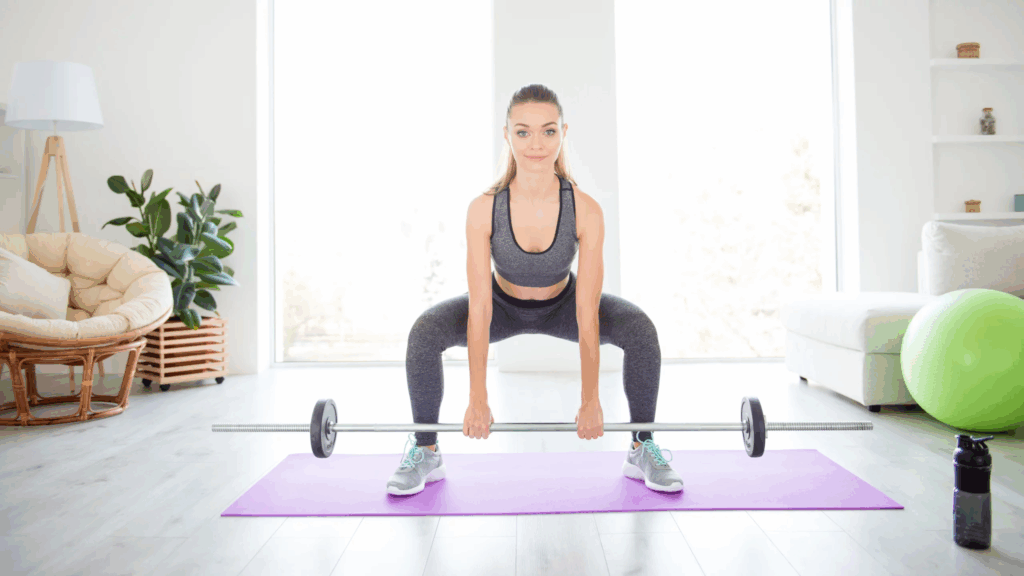Introduction
Fitness doesn’t have to mean spending hundreds of dollars on a gym membership, buying expensive machines, or filling your home with fancy gear. In fact, some of the most effective workouts require little to no equipment. This approach, known as minimalist fitness, focuses on using your body, simple tools, and everyday spaces to stay strong, fit, and healthy.
With busy schedules, financial constraints, and limited access to gyms, minimalist fitness has gained popularity in 2025. It’s affordable, practical, and adaptable for anyone—from students in small apartments to frequent travelers or parents managing family responsibilities.
This article explores the principles of minimalist fitness, key exercises, benefits, and strategies to stay healthy without expensive equipment.

Why Minimalist Fitness Works
Minimalist fitness thrives on simplicity and consistency. Instead of being distracted by gadgets or complicated machines, the focus is on mastering natural body movements.
Key Advantages:
- Cost-effective: No need for costly gym memberships or machines.
- Accessibility: Can be done anywhere—home, park, or even hotel rooms.
- Time-saving: Short, efficient workouts fit into busy schedules.
- Functional strength: Builds practical fitness for real-life activities.
- Adaptable: Suitable for beginners, advanced athletes, and people with limited space.
The Core Principles of Minimalist Fitness
- Use Your Bodyweight – Push-ups, squats, lunges, planks, and burpees are foundational.
- Prioritize Consistency Over Complexity – A simple 20-minute workout done daily is more effective than a complex one done rarely.
- Focus on Compound Movements – Exercises that work multiple muscle groups maximize results.
- Emphasize Form and Progression – Proper technique prevents injuries, while progressive overload ensures continuous growth.
- Include Mobility and Flexibility – Stretching and yoga maintain balance and prevent stiffness.
Minimalist Fitness Exercises
1. Push-Ups
- Target: Chest, shoulders, arms, and core.
- Variations: Standard, incline, decline, and diamond push-ups.
2. Squats
- Target: Legs and glutes.
- Variations: Bodyweight, jump squats, pistol squats.
3. Planks
- Target: Core stability.
- Variations: Side planks, forearm planks, plank with shoulder taps.
4. Lunges
- Target: Lower body and balance.
- Variations: Forward, reverse, walking, or jumping lunges.
5. Burpees
- Full-body cardio and strength.
6. Pull-Ups (if bar available)
- Target: Back, arms, shoulders.
- Alternatives: Use sturdy park bars or door-frame pull-up bars.
7. Dips (using chairs or benches)
- Target: Triceps, chest, and shoulders.
8. Yoga and Stretching
- Improves flexibility, balance, and mindfulness.
Creating a Minimalist Fitness Routine
Here’s a sample weekly routine:
Day 1 – Strength & Core
- Push-ups (3 sets of 12)
- Squats (3 sets of 15)
- Plank (3 x 45 sec)
Day 2 – Cardio & Conditioning
- Jumping jacks (3 x 1 min)
- Burpees (3 sets of 10)
- Mountain climbers (3 x 30 sec)
Day 3 – Active Recovery
- Light yoga or stretching (20–30 minutes).
Day 4 – Strength Progression
- Lunges (3 sets of 12 per leg)
- Chair dips (3 sets of 10)
- Side planks (3 x 30 sec each side)
Day 5 – Cardio & Endurance
- Jogging outdoors or stair climbing (20 minutes).
Day 6 – Full Body Circuit
- 5 push-ups, 10 squats, 15 sit-ups, repeat 5–6 rounds.
Day 7 – Rest or gentle stretching.
This minimalist plan balances strength, cardio, flexibility, and recovery without requiring any machines.

The Role of Nutrition in Minimalist Fitness
Minimalist fitness goes beyond workouts—what you eat matters too. You don’t need expensive supplements or fancy diets.
- Focus on whole foods: vegetables, fruits, whole grains, lean proteins.
- Stay hydrated with water instead of sugary drinks.
- Keep meals simple and portion-controlled.
- If budget allows, prep meals ahead to avoid fast-food temptations.
Case Study: Sarah’s Minimalist Fitness Journey
Sarah, a graduate student living in a small apartment, couldn’t afford a gym membership. She started with a 15-minute bodyweight routine every morning, using online tutorials for guidance. Within six months, she built muscle, improved posture, and reported higher energy levels without spending a dime on fitness equipment. Her story illustrates how discipline and minimalism can achieve big results.
Tips for Staying Consistent
- Set a fixed workout time each day.
- Track progress with a journal or fitness app.
- Start small—just 10 minutes daily—and increase gradually.
- Mix it up with different exercises to avoid boredom.
- Celebrate small wins like holding a longer plank or completing an extra set.
Why Minimalist Fitness Fits 2025 Lifestyles
- Remote work: Many people now spend long hours at home and need simple, space-saving routines.
- Economic challenges: Affordable health options are in demand.
- Sustainability: Minimalist fitness avoids consumerism, reducing reliance on expensive products.
- Flexibility: Fits any schedule, anywhere—home, office, or while traveling.
Conclusion
Minimalist fitness proves that you don’t need expensive gyms, advanced machines, or complicated programs to stay healthy. With nothing more than your body, a bit of space, and the discipline to stay consistent, you can build strength, improve flexibility, and boost overall well-being.
In 2025, where time and money are limited for many, simplicity is power. Minimalist fitness offers an accessible path to health for everyone, no matter their lifestyle or budget.
References
- World Health Organization (2024). Physical activity guidelines.
- Mayo Clinic (2023). Bodyweight exercises for strength and health.
- Harvard Health Publishing (2024). Benefits of minimalist workouts.
- American Council on Exercise (2023). Effective at-home exercises.
- Healthline (2024). Beginner-friendly bodyweight workouts.
- Cleveland Clinic (2023). Stretching and flexibility routines.
- Psychology Today (2023). The role of consistency in fitness.
- CDC (2024). Healthy habits for active living.
- Men’s Health (2024). Minimalist fitness trends.
- Women’s Health (2023). No-equipment workouts that work.